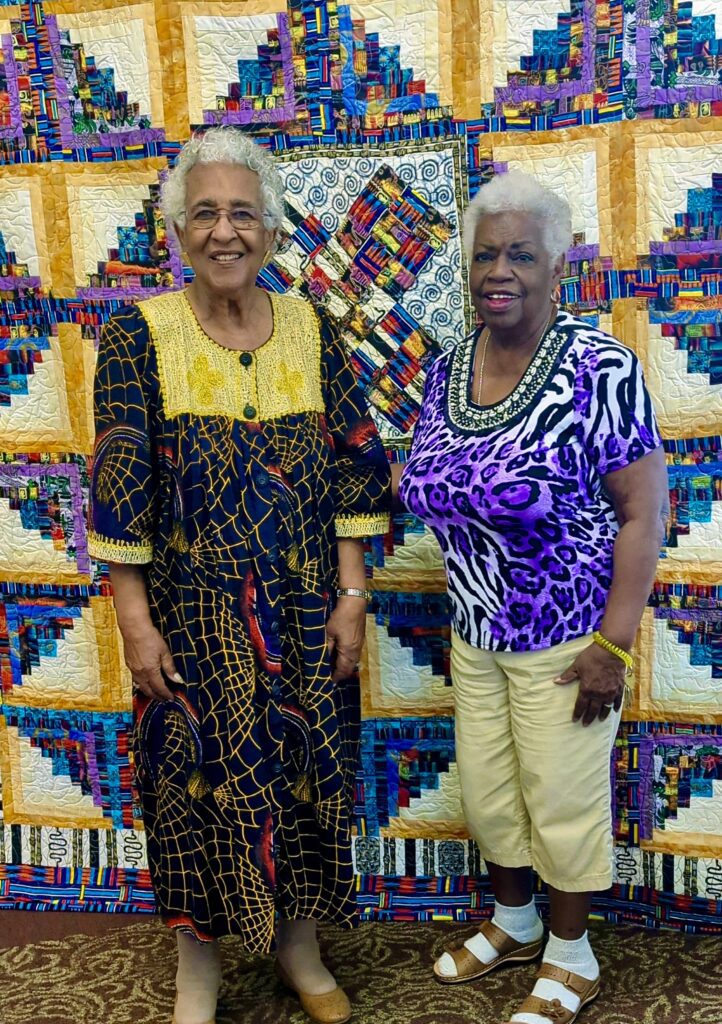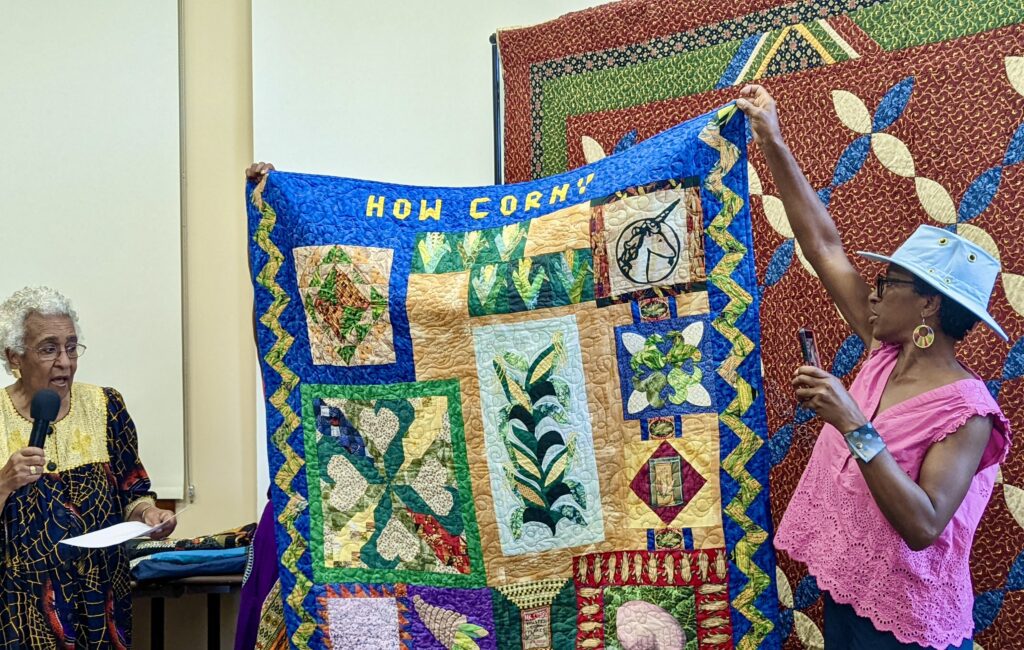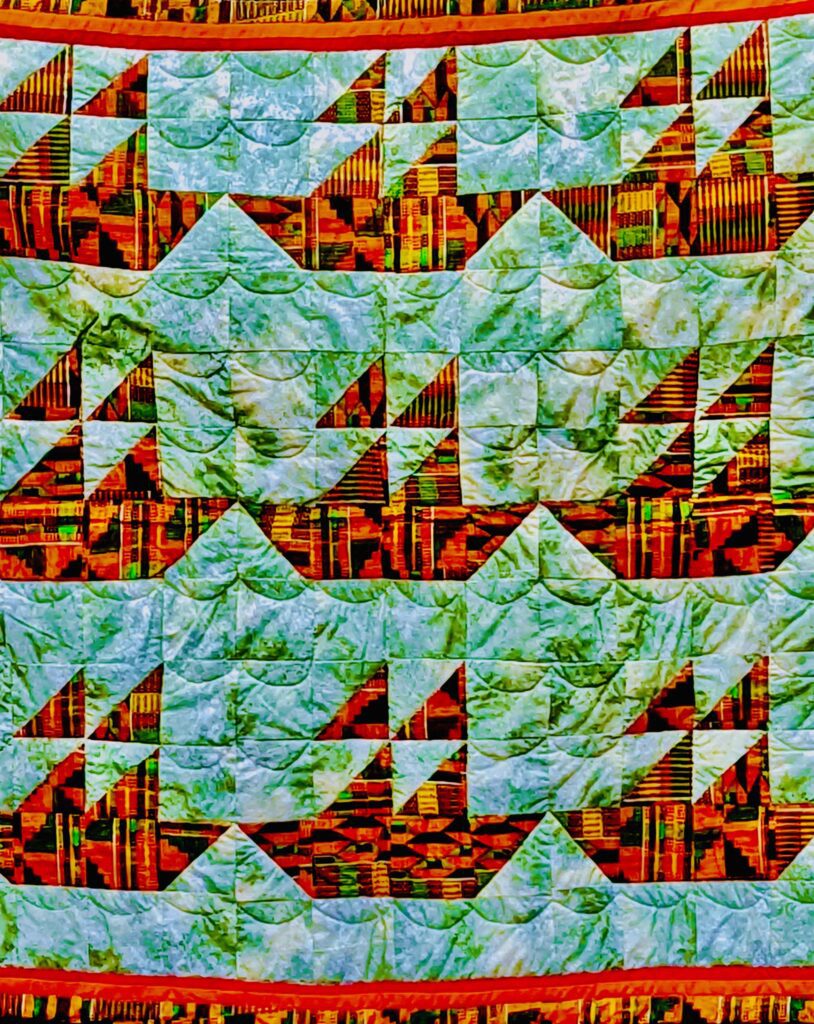
Retired educators Earthleen Briggs owner of Ethnic Quilts and Fabrics and Violet Vaughnes, in recognition of Black History Month, presented residents of Mount Miguel Covenant Village in Spring Valley, a suburb of San Diego, and invited guests to a story-telling through their artistry in the vibrant and beautifully form of quilting.
Both women have travelled the world and shared their very inspirational quilting journeys.
Earthleen, has traveled to Africa and shared in her experience is that in Africa, it’s all about color.
In addition to her original work, Violet, who retired in 2019, was a quilt appraiser from 2004 to 2019, certified by the American Quilter’s Society in Paducah, Kentucky. She shared that she was gifted a quilt from a male quilter, paying tribute to Rosa Parks, titled “Breaking the Bonds of Segregation.”
Quilting has a rich history dating back thousands of years, with evidence of early quilted fabrics found in ancient Egypt, China, and the Middle East. In Europe, quilting became popular during the Middle Ages and Renaissance, and it was often used to create luxurious bed coverings and clothing for the wealthy.
However, in the United States, quilting took on a different meaning. Enslaved Black women in the South were often forced to make quilts for their enslavers, using scraps of fabric from old clothes and other materials. Despite the difficult circumstances, these women found a way to use quilting as a means of resistance and communication.
Through the use of patterns and symbols, such as the North Star or the Underground Railroad, quilts became a means of conveying messages and providing directions to freedom. The quilts were also used as a way of preserving cultural traditions and passing down stories and histories to future generations.
Quilting continued to play an important role in Black communities during the Civil Rights era of the 1950s and 1960s. Quilting circles provided a space for Black women to gather and share stories, ideas, and strategies for activism. The quilts themselves became powerful symbols of resistance and solidarity.
Today, quilting is still an important art form in many Black communities, with many artists using it as a way to explore issues of identity, history, and social justice. Through the art of quilting, Black women have turned a tool of oppression into a powerful expression of liberation and creativity.



Thank you for including this article on your site. I had no idea it was to be publicized. Earthleen and I were pleased to present this program to our community. Until i retired in 2019, I was a quilt appraiser from 2004 to 2019, certified by the American Quilter’s Society in Paducah, Kentucky as well as a quilt maker.
Violet Vaughnes
Thank you Ms. Violet! Your work is incredible!
Thank you so much for this wonderful article